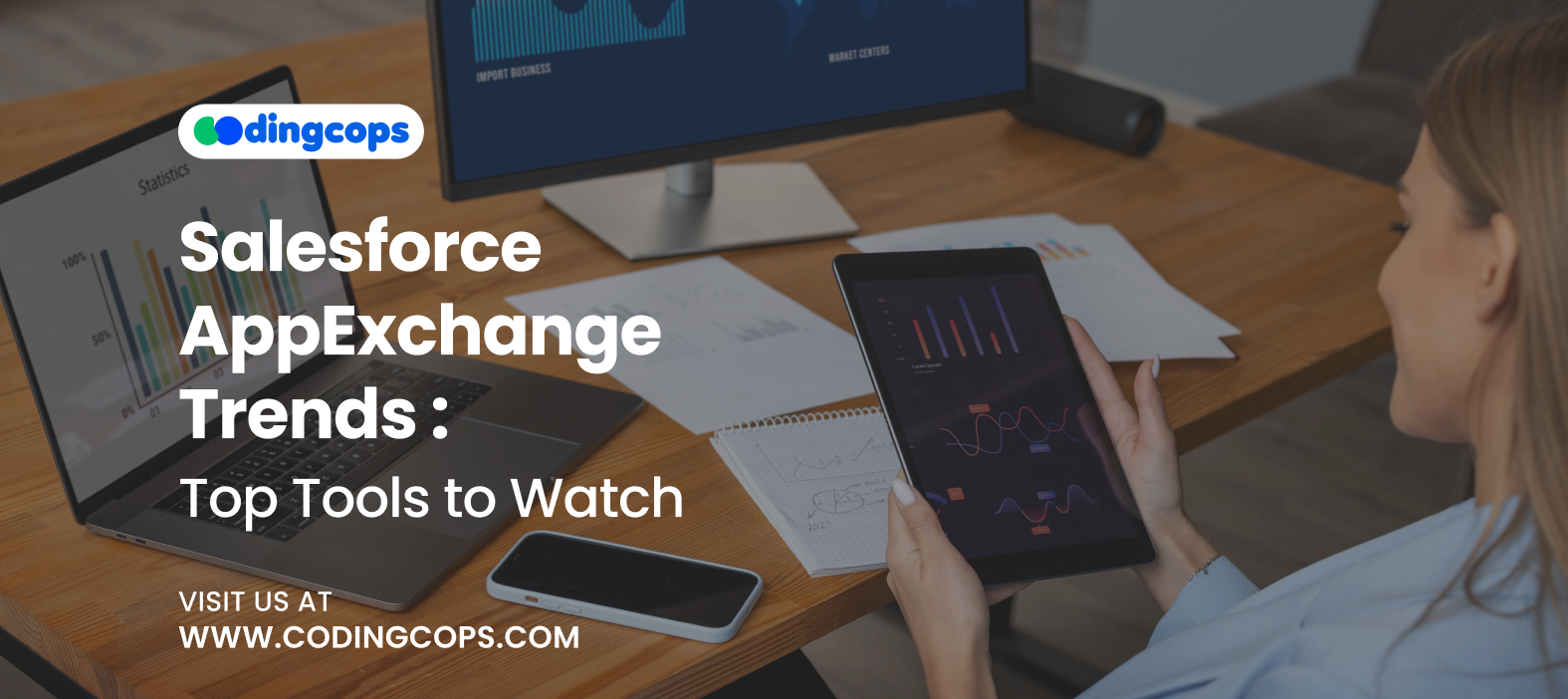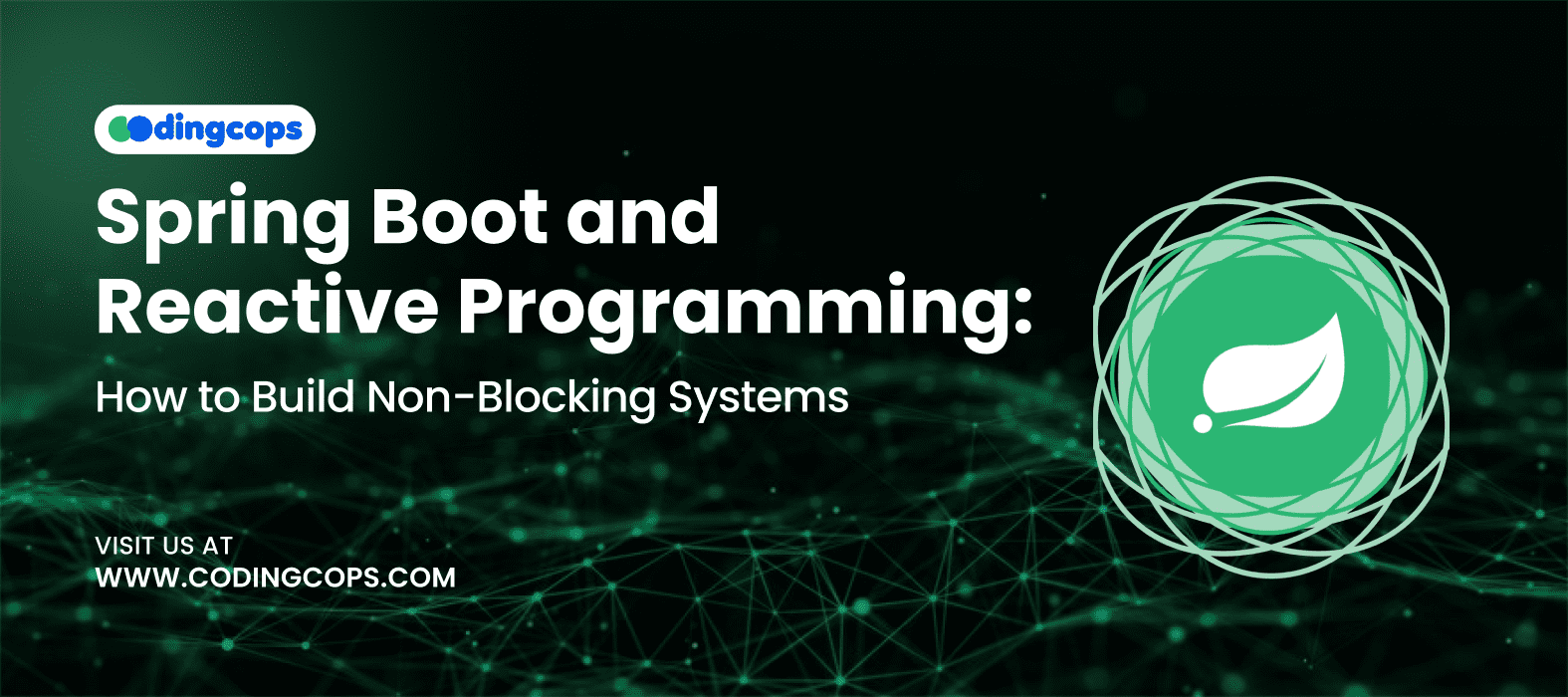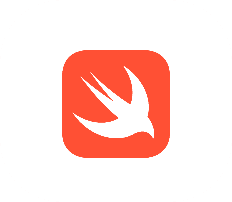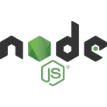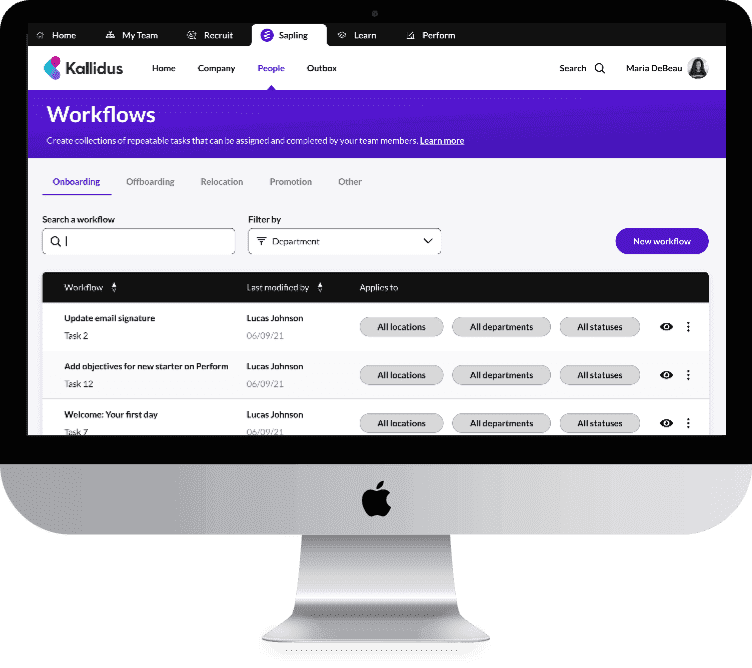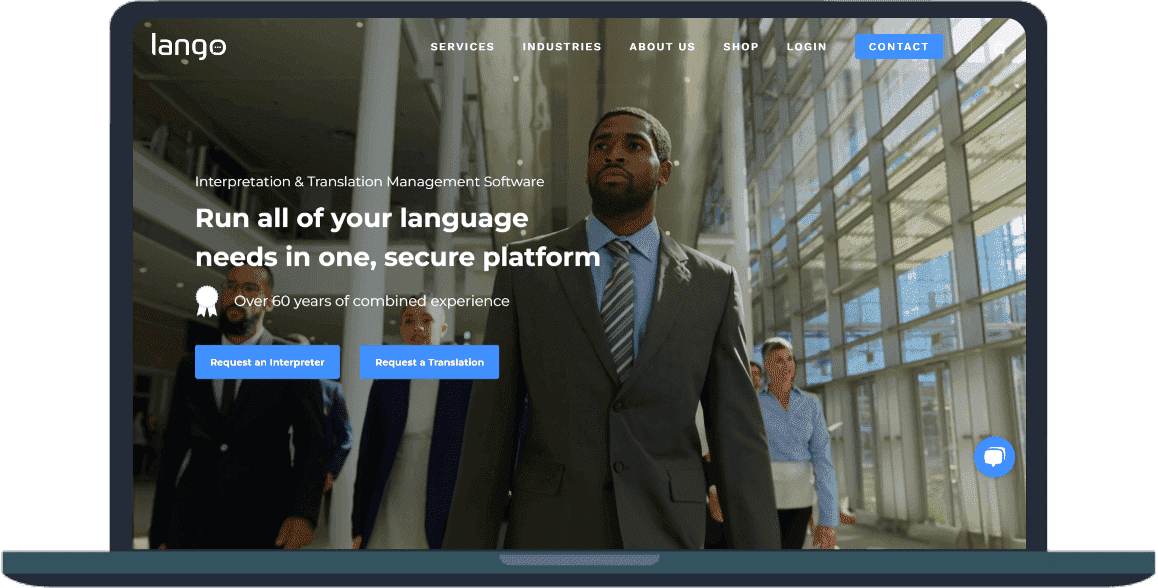According to statistics, Salesforce holds the largest share of the CRM market at 22%. This goes to show that organizations relying on the Salesforce ecosystem are no longer just adopting a CRM; they are embracing a full digital operations platform. At the center of this evolution lies AppExchange, Salesforce’s app marketplace, where partners and vendors deliver extensions and applications.
In this guide, we’ll discuss why AppExchange still matters and also talk about some key trends shaping the marketplace.
Why AppExchange Still Matters?

Salesforce’s Ecosystem Core
AppExchange isn’t an optional extension; it’s integral to Salesforce’s platform strategy. The marketplace, which has more than 9000 applications, links users with reliable third-party solutions that address functional gaps in sales and industry specific procedures. Teams may easily find solutions that are natively connected with Salesforce instead of starting from scratch. This saves developers months of development effort.
Additionally, Salesforce is stepping up its efforts to provide these breakthroughs through Einstein Copilot. Many of the features users adopt aren’t built directly into Salesforce’s core; they are introduced and iterated by independent software vendors through the marketplace.
Speed and Agility for Business Users
Thanks to AppExchange, businesses may advance faster without having to wait for protracted development cycles or IT backlogs. For example, companies may install a certified AppExchange product and be up and running in a matter of hours rather than spending months developing a proprietary e signature solution or a data enrichment tool.
This agility is especially valuable for non technical teams. Salesforce developers and administrators can use low code apps to automate procedures without extensive programming skills by deploying solutions directly from the AppExchange.
Reliable Security
Salesforce AppExchange has a rigorous security review process. Every app is assessed for compliance with Salesforce’s security and data protection standards before being listed. This gives businesses the confidence that they are installing secure and enterprise grade software.
In a world where compliance with regulations and data privacy are of utmost importance. Additionally, businesses may utilize AppExchange apps to take advantage of new technologies without compromising control since each listing fulfills Salesforce’s strict security requirements.
Industry Specific Customization
Generic CRMs no longer cut it for many industries. Financial services and manufacturing all have unique regulatory and workflow demands. AppExchange bridges that gap by offering verticalized apps built to address these niche requirements.
This specialization makes Salesforce adaptable to virtually any sector. This enables businesses to customize their CRM to the reality of their company environment and go beyond the features included.
Enabling Ecosystem Growth for Developers
For developers and Salesforce partners, AppExchange is more than a distribution channel; it’s a thriving business ecosystem. Independent software vendors can monetize their solutions, tap into Salesforce’s massive customer base, and co sell through Salesforce’s Partner Program.
Furthermore, with new APIs and AI enabled developer tools, building Salesforce has never been easier. The marketplace now supports component based distribution. This allows ISVs to offer modular features or AI services instead of entire applications.
Continuous Upgrades
One of the most overlooked advantages of AppExchange is seamless compatibility. Apps listed on the marketplace must stay aligned with Salesforce’s triannual updates. Hence, this means businesses can innovate without fear of version conflicts or integration breakdowns.
Because Salesforce’s platform architecture is always changing, this continuous compatibility guarantees that all of the apps in your ecosystem will continue to function properly.
What Salesforce AppExchange Trends to Look Out?
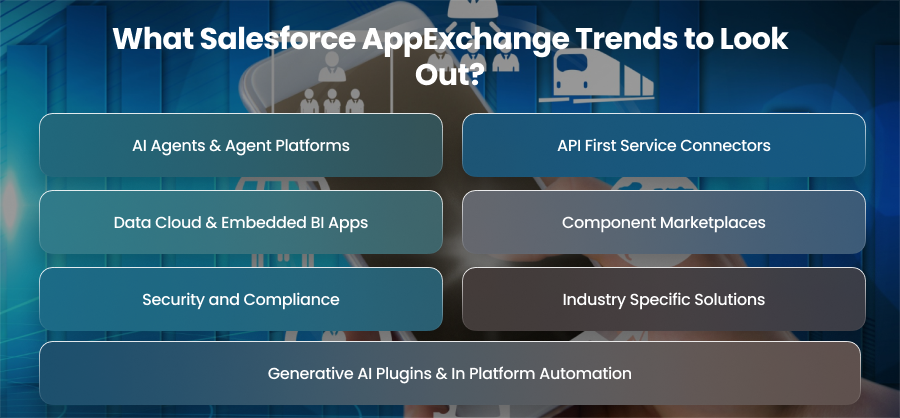
AI Agents & Agent Platforms
AI agents are taking center stage in Salesforce. These intelligent digital workers can autonomously perform repetitive or complex tasks. This can include lead qualification and data entry to predictive analytics and customer support.
AppExchange is witnessing a rise in AI agent platforms, applications that allow organizations to create and deploy specialized agents across sales and marketing functions. These platforms integrate with Salesforce’s Einstein ecosystem. This makes it possible for companies to use generative insights and conversational AI in real time.
For instance, although service bots may independently respond to Tier 1 inquiries, sales representatives can proactively spot upselling possibilities. Teams may now focus on strategic tasks.
Generative AI Plugins & In Platform Automation
Generative AI is redefining how Salesforce users create content and analyze data. AppExchange is seeing a surge in Generative AI plugins designed to enhance workflows directly within Salesforce.
These plugins empower users to generate personalized email templates and forecast trends, all with a single prompt. Many of these solutions integrate with Einstein Copilot Studio, Salesforce’s tools for creating custom AI assistants that understand business specific data and processes.
In platform automation is also changing. Users may now execute automated workflows right within Salesforce, eliminating the need to navigate between apps.
Data Cloud & Embedded BI Apps
Data is the new fuel for intelligent operations, and Salesforce Data Cloud has become a core foundation for connecting disparate data sources. Also, AppExchange is expanding with embedded BI apps that plug directly into the Data Cloud environment.
These solutions offer real time analytics and unified reporting across Salesforce. Teams can anticipate results and visualize KPIs without ever leaving the Salesforce platform thanks to them.
AI is also used by embedded BI apps to automatically reveal findings. Sales managers, for example, can receive immediate notifications when certain campaigns exceed expectations or when transaction velocities slow down. Leaders may respond more quickly and intelligently because of the close integration of data and insight.
Component Marketplaces
Another major trend is the rise of component marketplaces within AppExchange. These micro solutions, such as Lightning Web Components or reusable UI elements. This allows developers and admins to rapidly build and customize Salesforce apps.
Rather than purchasing full fledged applications, organizations can now assemble modular components tailored to their exact needs. This significantly reduces development time and cost.
Additionally, component markets will serve as the cornerstone of enterprise-grade app ecosystems due to Salesforce’s emphasis on composability. Teams are able to develop more quickly while upholding uniform governance and user experience.
Security and Compliance
As Salesforce becomes central to enterprise operations, security and compliance have become non negotiable. Also, AppExchange vendors are prioritizing built in security frameworks and data governance automation to align with stricter global regulations.
You should anticipate a rise in security focused applications that offer data encryption and ongoing monitoring, all of which are connected with Salesforce Shield. These solutions assist companies in ensuring data openness and reducing risks.
In addition, compliance automation solutions are becoming more popular, automatically documenting audit trails and policy enforcement.
Industry Specific Solutions
While Salesforce has long offered industry clouds, it’s now seeing explosive growth in industry specific AppExchange solutions. Vendors are creating applications specifically for financial and healthcare services, each of which addresses certain operational and regulatory requirements.
For example, finance apps simplify KYC and portfolio management procedures, while healthcare applications concentrate on patient data protection and EHR connections.
API First Service Connectors
In a hyper connected business environment, integration remains a critical success factor. The API first approach is dominating AppExchange with more apps designed as service connectors that easily link Salesforce with third party platforms like AWS.
These API first connectors enable real time data exchange and automation across complex multi cloud environments. They also align with Salesforce’s push toward Composable Enterprise Architecture. This allows businesses to integrate tools without breaking workflows.
Developers benefit too; API apps provide reusable endpoints and simplify maintenance. These developments enable IT teams to create adaptable, interoperable systems that can change with the times.
How Can IT Leaders Prepare for this Shift?

Develop a Strategic App Governance Framework
The growing number of AI powered and data apps means governance is more critical than ever. IT leaders must establish a clear framework for evaluating and maintaining AppExchange integrations.
This includes assessing:
- Security and Compliance Standards: Global legislation and organizational data policies must be followed by all apps.
- Integration Compatibility: To avoid data silos or redundancy, apps should be in line with the corporate architecture.
- Performance and ROI Metrics: Establish standards for gauging commercial value and app uptake.
Additionally, a trustworthy governance structure guarantees that businesses adopt new AI agents or data connections. They maintain control and long term scalability across their Salesforce environments.
Invest in AI and Data Literacy
The benefit of new AppExchange tools cannot be maximized by technology alone. IT directors need to make sure that their staff members are proficient in the usage and administration of AI and data analytics. Efforts for cross functional upskilling include training in data analytics and AI literacy. As a result, this facilitates improved decision making and process optimization for staff members.
Prioritize Composability
API first service connectors and component marketplaces are transforming Salesforce into a modular and composable platform. IT leaders should adopt integration ready architectures that can accommodate new tools and changing business needs. This involves embracing API first design principles. It also includes utilizing middleware platforms like MuleSoft to connect Salesforce with ERP and analytics systems.
Focus on Security and Ethical AI Governance
The rise of AI apps makes security and compliance top priorities. IT leaders must embed security by design principles into their Salesforce strategy. This includes implementing zero trust access and protecting data with encryption and regional compliance. Also, you should proactively address these areas to ensure trust and responsible innovation.
Encourage Collaboration Between Business and IT Teams
The lines between IT and business operations are blurring, especially with low code tools. To maximize value from AppExchange innovations, IT leaders should foster collaboration between technical and non technical teams. This includes creating cross functional squads to pilot new apps and users to automate workflows with IT oversight.
Adopt Continuous Experimentation
AppExchange is changing, making continuous experimentation essential. In order to avoid interfering with production settings, IT leaders should adopt data intelligence and sandbox testing. Additionally, by lowering risk and accelerating iteration, continuous testing helps businesses stay flexible and prepared to embrace emerging technology.
Align AppExchange Strategy with Business Objectives
Every AppExchange investment should serve a clear business goal. IT leaders must link app adoption to measurable KPIs such as sales velocity or marketing ROI. While frequent portfolio evaluations enable the retirement of out-of-date or underused apps, using insights from Data Cloud and integrated BI tools helps monitor the effect. Therefore, ensuring that app usage is in line with strategic goals guarantees that Salesforce investments provide significant business value rather than fragmented toolkits.
Prepare for Industry Specific Compliance
Industry focused solutions are becoming increasingly prevalent on AppExchange, particularly for regulated sectors. IT leaders must proactively address compliance and workflow requirements by evaluating vendor certifications and utilizing audit tools for transparency. By doing so, organizations can adopt specialized applications confidently. This accelerates innovation without compromising regulatory compliance.
Manage Vendor Partnerships
Maintaining a competitive edge in the AppExchange ecosystem requires solid vendor relationships. IT directors should work with providers that are dedicated to regular upgrades and with qualified Salesforce experts. These collaborations guarantee that companies stay up to date on new tools and are able to promptly adjust to platform modifications.
Final Words
Salesforce AppExchange is using AI and data driven solutions to redefine business innovation. This change will be spearheaded by IT executives who place a high priority on integration preparedness and governance. Therefore, they may create an intelligent and scalable ecosystem by deliberately matching technology adoption with business objectives.

